Roasting is my favorite and one of the easiest ways to prepare just about every vegetable. Roasting vegetables concentrates and caramelizes their natural sugars and intensifies their flavor.
This browning process, known as the Maillard Reaction, adds a toasted nutty flavor.
I love to add flavor to soups and casseroles by roasting the vegetables before adding them in. Try this recipe for Roasted Cauliflower, Leek, and Potato Soup.
Jump to:
- Save This Recipe to Your Email
- What Vegetables Can You Roast?
- Dry the Vegetables
- Cut the Vegetables into Similar Sizes
- Do I Need Oil to Roast Vegetables?
- Add Salt
- What Temperature is Best for Roasting Vegetables?
- Use a Baking Pan with Low Sides
- Use Parchment Paper
- Don't Crowd the Pan
- Turn on the Convection Setting On
- Do you Roast Vegetables Covered or Uncovered?
- Stir or Flip the Vegetables
- How Long Does it Take to Roast Vegetables?
- General Roasting Times
- Use Your Broiler
- How to Store and Reheat Roasted Vegetables
- 📖 Recipe
- 💬 Comments
What Vegetables Can You Roast?
Just about any vegetable can be roasted. Root vegetables like potatoes, carrots, rutabagas, and turnips are classics. You can also roast cruciferous vegetables like broccoli, cauliflower, and Brussels sprouts. I love to make Kohlrabi Fries by roasting spiced kohlrabi sticks.
Summer vegetables like bell peppers, summer squash, and tomatoes taste amazing when roasted. Winter squashes like pumpkin, butternut, and acorn squash become almost as sweet as candy when they are roasted.
You can also roast leafy green vegetables. Roasted kale chips taste amazing sprinkled with a little salt.
If you are wondering if a vegetable can be roasted, I suggest following these tips and giving it a try.
Dry the Vegetables
After washing the vegetables dry them thoroughly. This will allow the oil to coat them properly as well as reduce the roasting time.
Roasting vegetables reduces their water content and intensifies their flavor. Additional surface water will prolong this process.
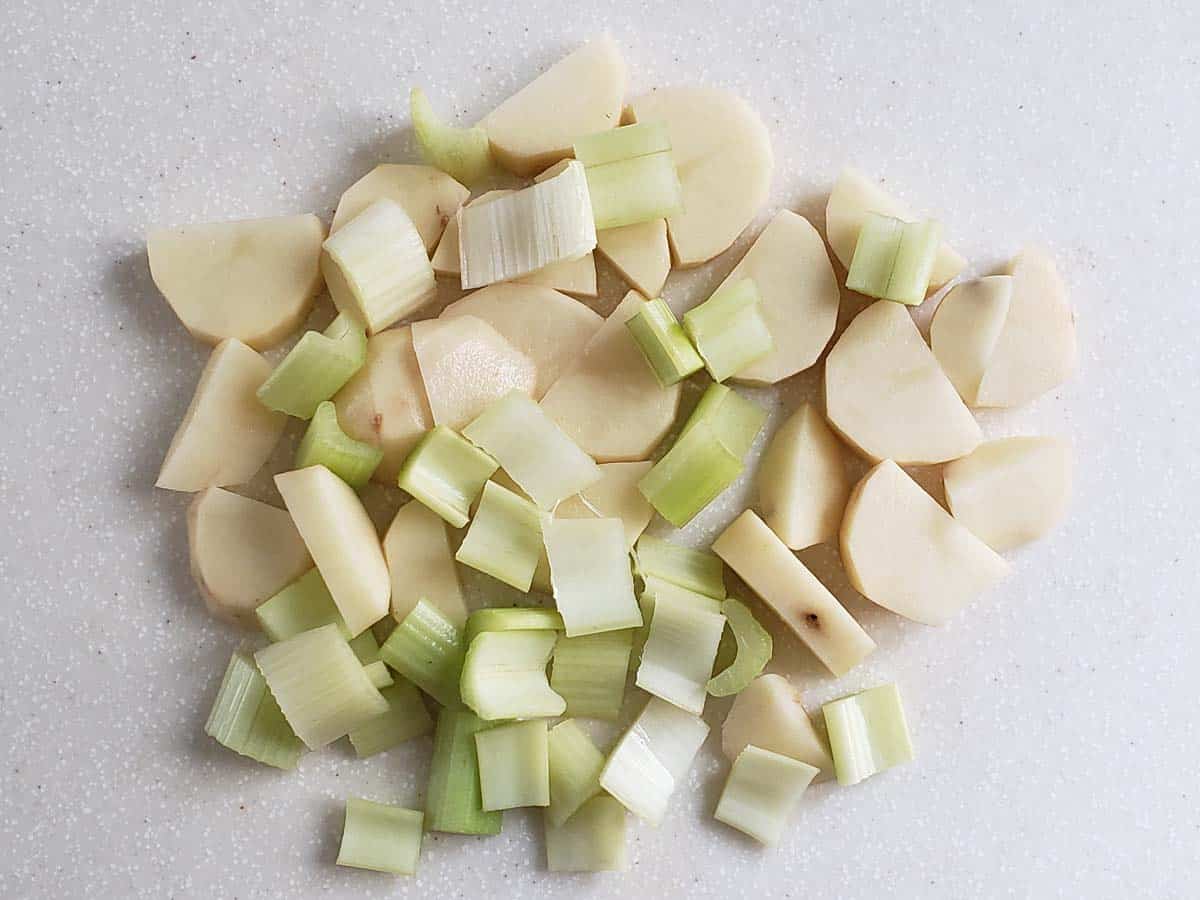
Cut the Vegetables into Similar Sizes
When roasting vegetables they should be cut into similar sizes for even cooking. If your vegetables are not cut into even sizes the smaller pieces will end up burnt while the larger pieces will still be hard and undercooked.
Smaller thinner items like green beans and asparagus can be left whole.
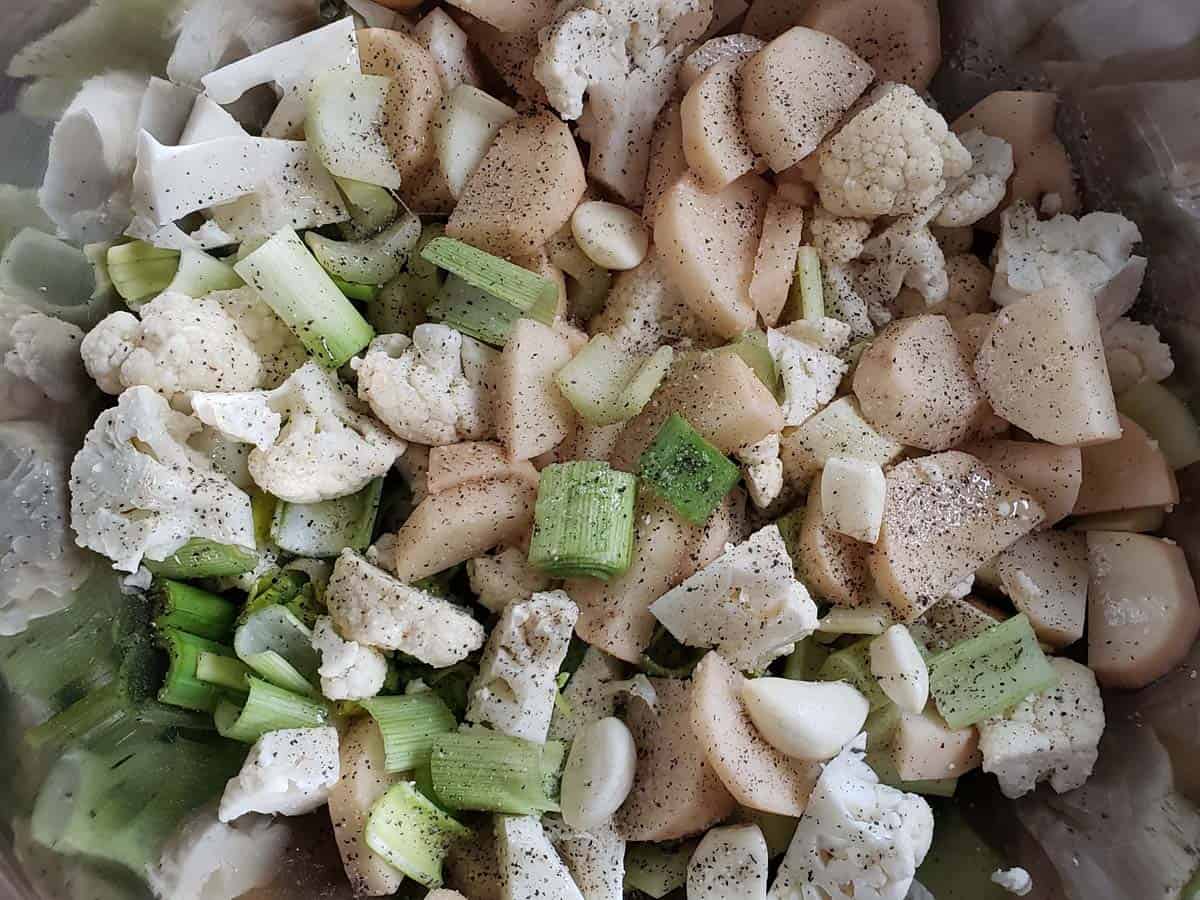
Do I Need Oil to Roast Vegetables?
Yes, coating the vegetables with oil will promote even browning and crisping and prevent them from drying out. Use enough oil to evenly coat the vegetables without leaving a puddle of oil in the bottom of your bowl. A tablespoon or two is usually sufficient.
Which Oil is Best for Roasting Vegetables?
I usually stick with mild olive oil. Because we are cooking the oil us basic plain olive oil. Save the extra virgin olive oil for uncooked preparations like salad dressing.
You could also use coconut oil or avocado oil. Stick with oils that have a higher smoke point.
Add Salt
Adding salt will not only season the vegetables and increase their flavor, but it will also help to draw out the excess water.
Sprinkle a little salt over the vegetables before tossing them with the oil. You can also add additional herbs and seasoning for even more flavor.
What Temperature is Best for Roasting Vegetables?
My preferred roasting temperature is 425 degrees Fahrenheit.
Oven temperatures can vary as much as 50 degrees plus or minus. Use an inexpensive oven thermometer so that you always accurately know the temperature of your oven.
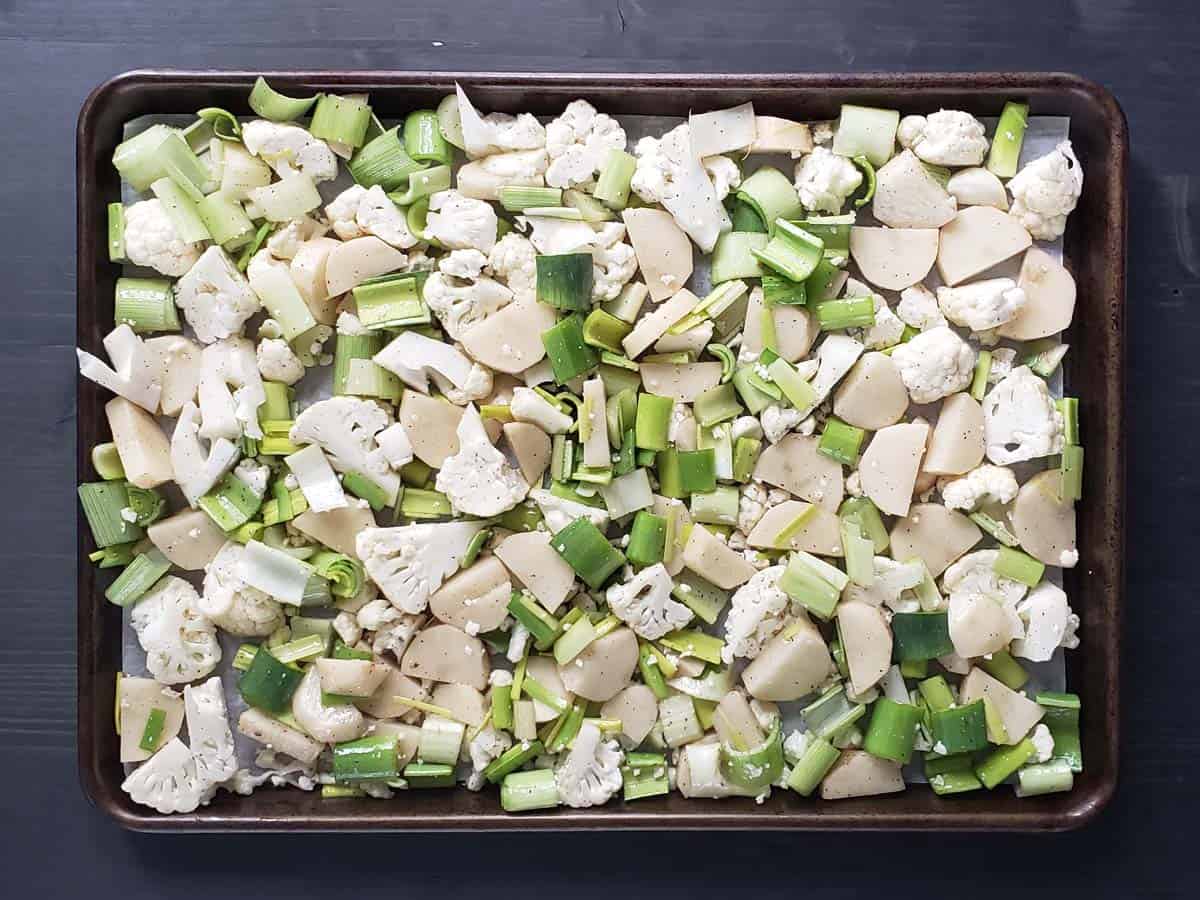
Use a Baking Pan with Low Sides
A pan with taller sides, like a Pyrex baking dish, will trap moisture and shield the vegetables from direct heat. The higher roasting temperature and direct heat are what browns and crisps the vegetables.
I like these baking sheets because they come with their own cooling racks.
Use Parchment Paper
Line your baking pan with parchment paper to make clean-up easy and prevent the vegetables from sticking.
Don't Crowd the Pan
Spread the vegetables out so there is room for air to circulate and for the moisture to evaporate. Vegetables that are too close together will steam rather than roast. Creating mushy vegetables and less browning/flavor.
Turn on the Convection Setting On
If you have one, the convection setting uses a small fan inside of the oven to circulate the air. This will reduce the cooking time and help the vegetables to brown more quickly and evenly.
Do you Roast Vegetables Covered or Uncovered?
Vegetables should be roasted uncovered to allow the steam to escape and the edges to become crispy.
Stir or Flip the Vegetables
The edges of the baking sheet are hotter than the center, Stirring the vegetables halfway through the roasting process will promote even browning and crisping and prevent the bottoms from burning.
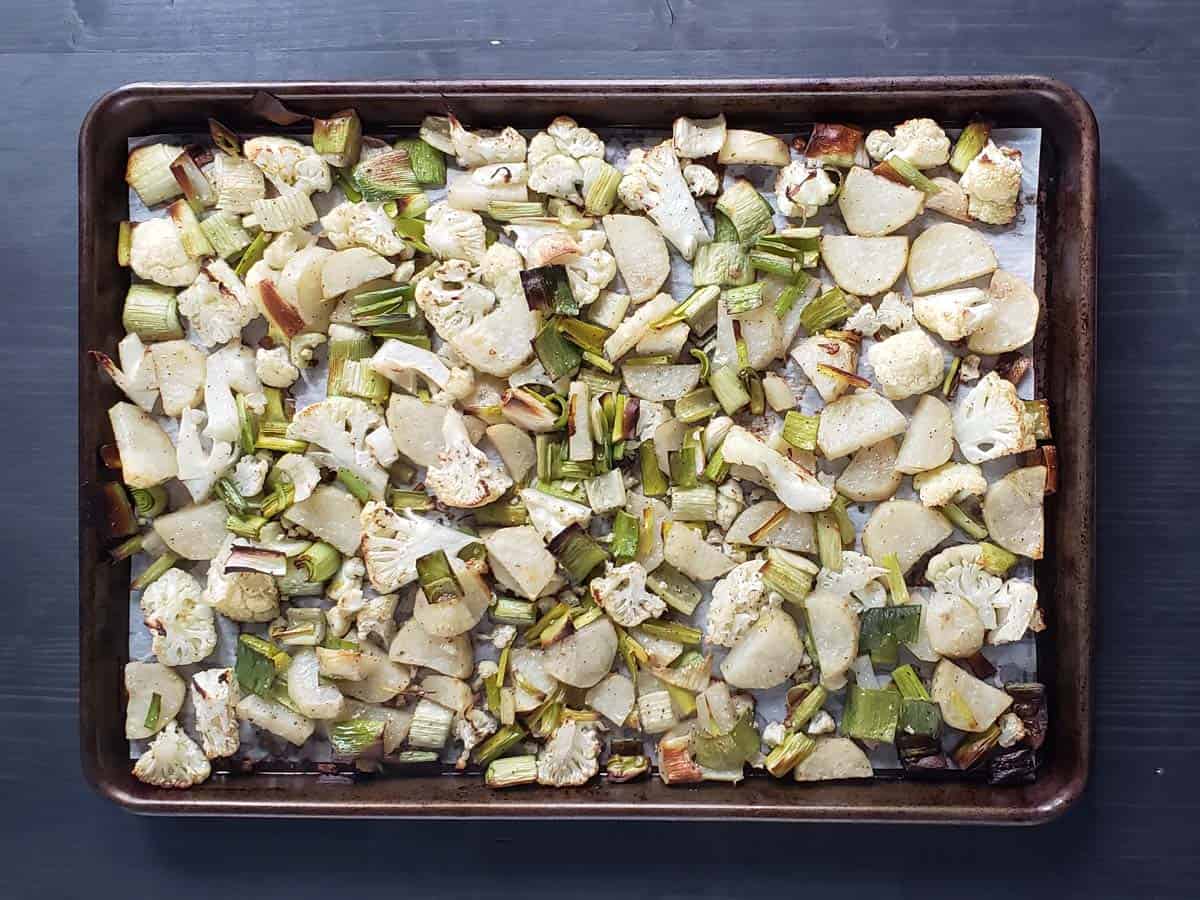
How Long Does it Take to Roast Vegetables?
The roasting time will depend upon the vegetable. Softer vegetables like tomatoes will cook more quickly, while harder vegetables like most root vegetables will cook more slowly. Smaller pieces will also cook more quickly than larger pieces.
If you are roasting more than one vegetable at a time be sure to choose vegetables that will have similar roasting times, like carrots and potatoes or broccoli and cauliflower.
Alternatively, you can roast the vegetables in stages. Add the vegetables that will take the longest time to roast first and then add quicker-cooking vegetables later.
You can also roast the vegetables on multiple smaller baking sheets. Adding and removing the different trays to the oven as needed.
If you’re roasting a new-to-you vegetable, start checking it after about 15 minutes, and keep roasting until it is tender with browned edges.
General Roasting Times
Cooking times are for ovens set at 425 degrees Fahrenheit. The size of the vegetables and changing the oven temperature will adjust the roasting time.
In general, you should start checking your vegetables around the 15-20 minute mark.
| Root Vegetables (Carrots, Potatoes, Radishes, Beets, etc.) | 30-45 minutes |
| Onions | 30-45 minutes |
| Winter Squash (Pumpkin, Butternut, Acorn, etc.) | 20-60 minutes |
| Crucifers (Broccoli, Cauliflower, Cabbage, Brussels Sprouts, etc.) | 15-25 minutes |
| Tomatoes | 15-20 minutes |
| Soft Vegetables (Summer Squash, Bell Peppers, Mushrooms, etc.) | 10-20 minutes |
| Thin Vegetables (Asparagus, green beans, snow peas, etc.) | 10-20 minutes |
If you want more specific instructions, check out this article from Epicurious that breaks down preparation and cooking times by vegetable.
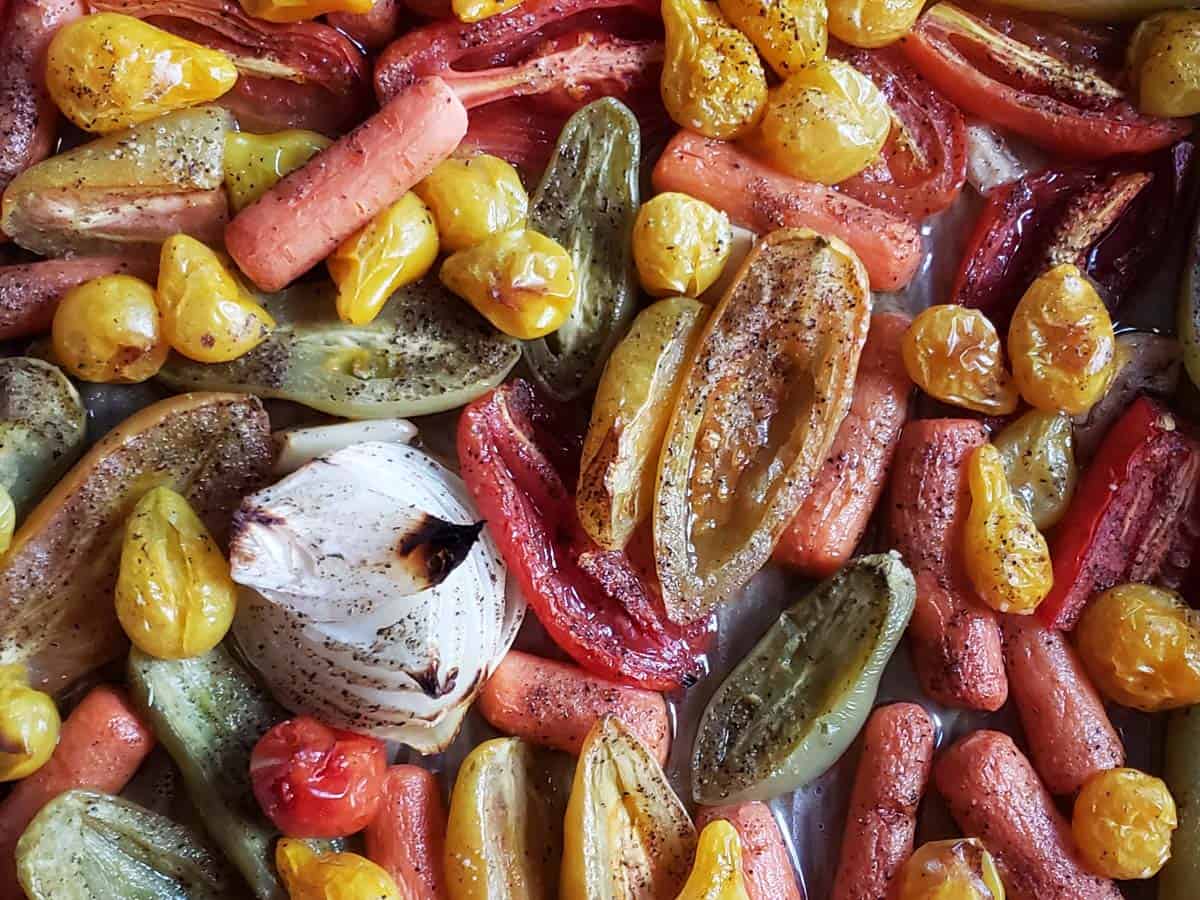
Use Your Broiler
If your vegetables are tender enough to pierce with a fork but not brown enough. Move the roasting pan to the top rack of your oven and broil them for a few minutes.
The intense heat from the broiler will quickly brown the edges of the vegetables. Be sure to watch the vegetables closely. They can quickly go from nutty roasted goodness to burnt quickly.
How to Store and Reheat Roasted Vegetables
Leftovers can be refrigerated in an airtight container for up to 5 days. Freshly roasted vegetables taste best, but they can also be served cold on a salad or mixed with grains or cooked pasta the next day.
If you want to reheat your roasted vegetables, it is best to use a dry heat method like roasting, broiling, grilling, or sauteing. I don't like microwaved roasted vegetables because they tend to steam and become soft.
📖 Recipe
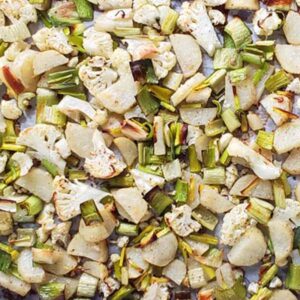
Roasted Vegetables
Equipment
Ingredients
- 1 to 2 pounds of any vegetables
- 1 to 2 tablespoon of neutral oil
- 1 teaspoon kosher salt
- ¼ teaspoon ground black pepper
Instructions
- Preheat the oven to 425 degrees Fahrenheit, move the oven rack to the middle position, and line a rimmed baking sheet with parchment paper.
- Pat the 1 to 2 pounds of any vegetables dry and peel if necessary. Cut the vegetables into similarly sized pieces.
- In a large bowl, coat the vegetables with the 1 to 2 tablespoon of neutral oil and season with 1 teaspoon kosher salt and ¼ teaspoon ground black pepper. Add a little more oil if the vegetables still look dry or don't seem evenly coated.
- Spread the vegetables onto the baking sheet in a single layer.
- Roast the vegetables until they are lightly brown and tender. Cooking times will vary depending on the types of vegetables you are using. Use the chart above as a guide to cooking times. For even browning, flip the vegetables halfway through the cooking time.
Notes
Nutrition
More Side Dish Recipes
Thanks for Reading!
If you try this recipe, let me know! Leave a comment and rate it below! You can also snap a picture and post it on Facebook or Instagram be sure to tag me @RaspberriesandKohlrabi.
Subscribe to get more recipes and tips by email.
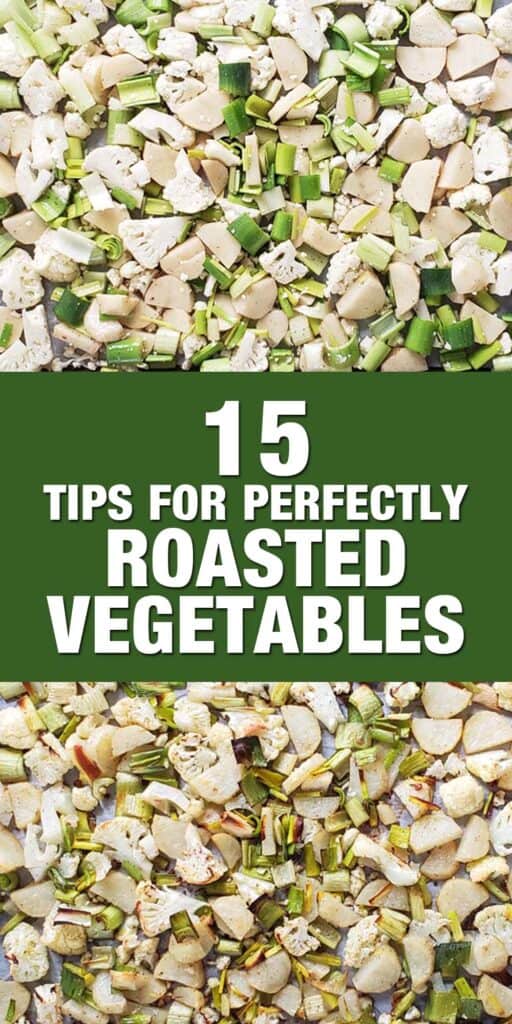


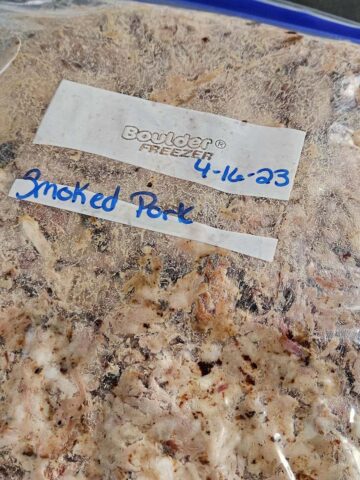
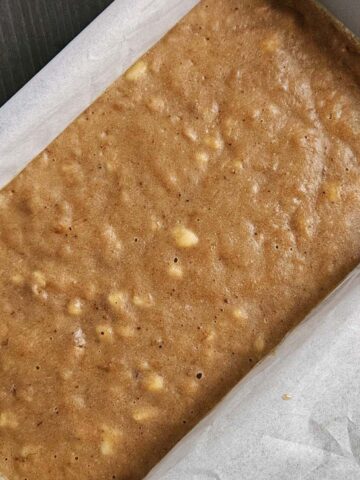

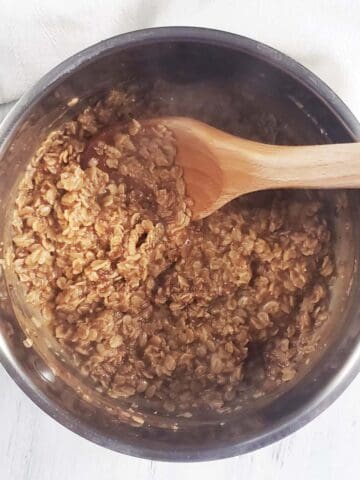
Comments
No Comments